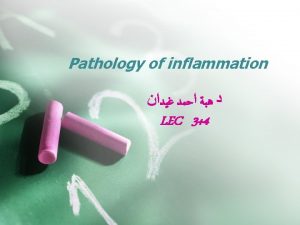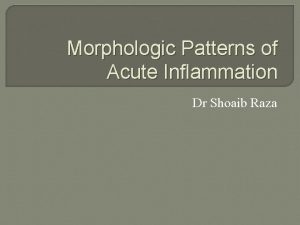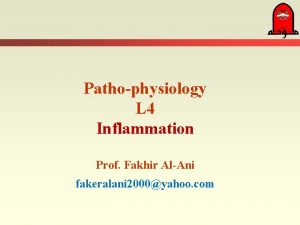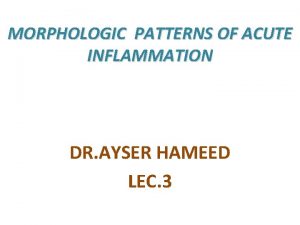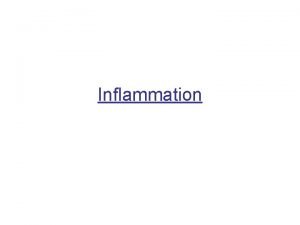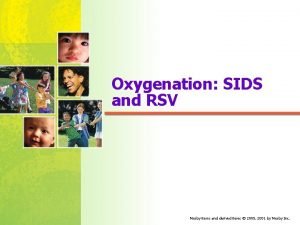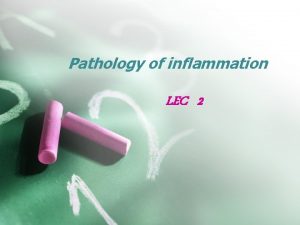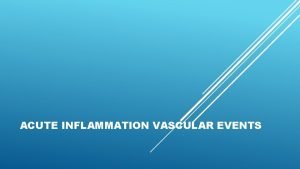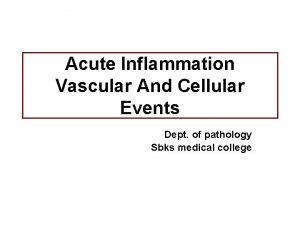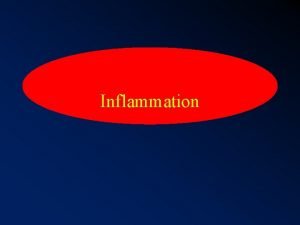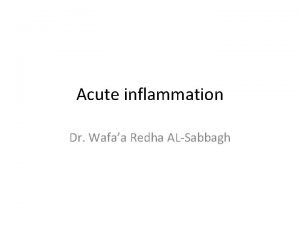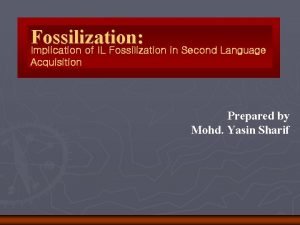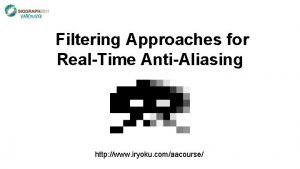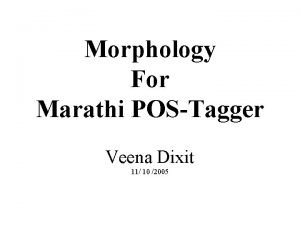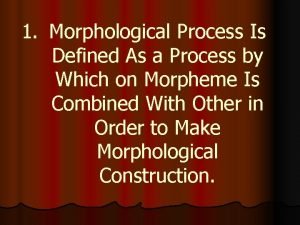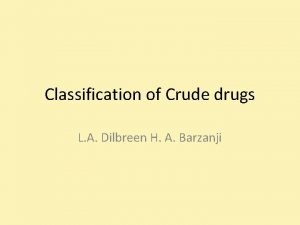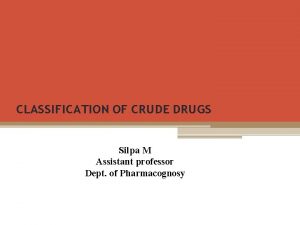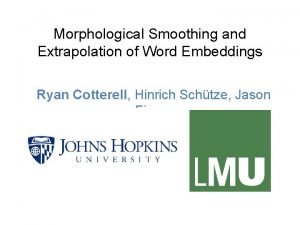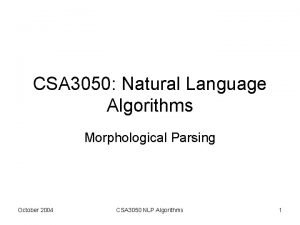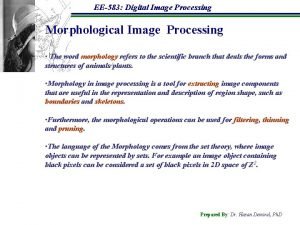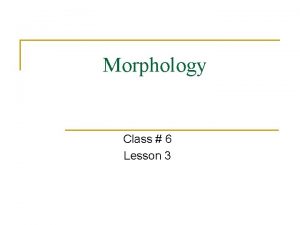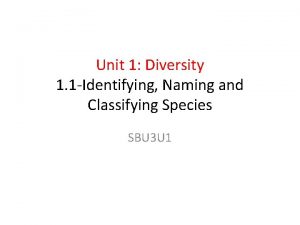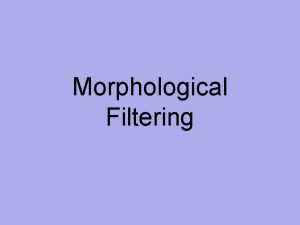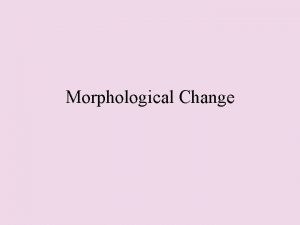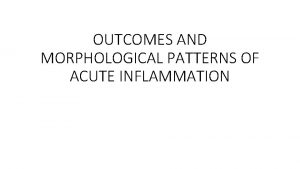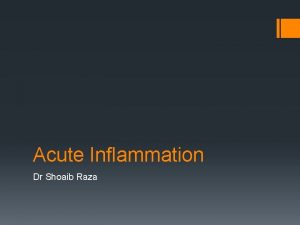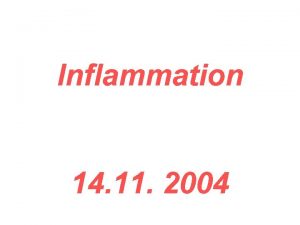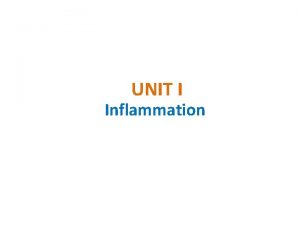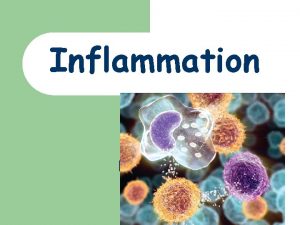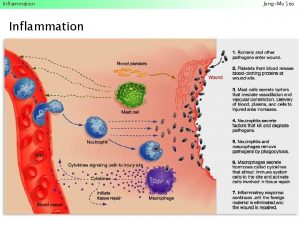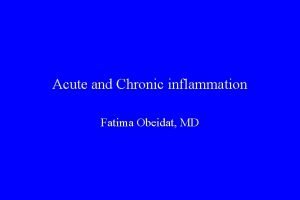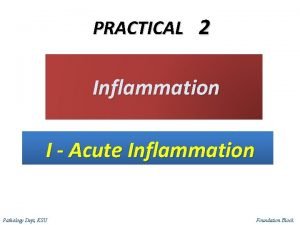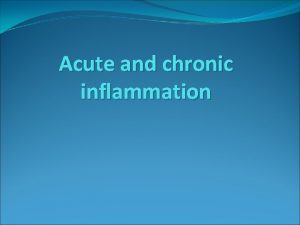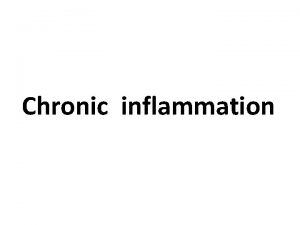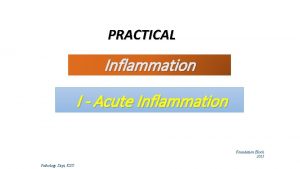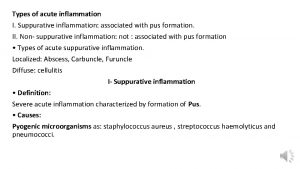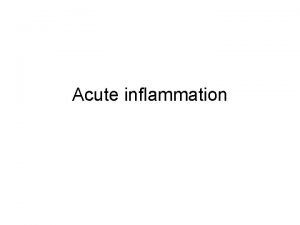MORPHOLOGICAL PATTERNS OF INFLAMMATION 1 PATTERNS ACUTE INFLAMMATION



































- Slides: 35

MORPHOLOGICAL PATTERNS OF INFLAMMATION 1

• • PATTERNS ACUTE INFLAMMATION Serous Catarrhal Fibrinous Hemorrhagic Suppurative Pseudomembranous Ulcerative Gangrenous 2

INFLAMMATORY EXUDATES • Serous – Watery, protein-poor effusion (e. g. , blister) • Serous – largely plasma, low in protein, Occurs early or in mild inflammation 3

SEROUS EXUDATE 4

ACUTE INFLAMMATION SEROUS 5

ACUTE INFLAMMATION SEROUS 6

INFLAMMATORY EXUDATES • Catarrhal – mucus hypersecretion that accompanies inflammation of a mucus membrane. 7

ACUTE INFLAMMATION CATARRHAL 8

INFLAMMATORY EXUDATES • Fibrinous – large amounts of fibrinogen, Forms a thick, sticky meshwork. Only removed by fibrolytic enzymes. Failure of removal leads to influx of fibroblasts & scar tissue formation 9

ACUTE INFLAMMATION FIBRINOUS 10

FIBRINOUS EXUDATE 11

INFLAMMATORY EXUDATES • Hemorrhagic – damage to blood vessels, Occurs with other forms of exudate. 12

ACUTE INFLAMMATION HEMORRHAGIC 13

INFLAMMATORY EXUDATES • Suppurative/ purulent – Presence of pus (pyogenic staph spp. ) – Often walled-off if persistent – contains pus (remains of WBCs, protein and tissue debris). Liquefactive necrosis! 14

ACUTE INFLAMMATION 15

ACUTE INFLAMMATION SUPPURATIVE / PURULENT - ABSCESS 16

ACUTE INFLAMMATION SUPPURATIVE / PURULENT - ABSCESS 17

ACUTE INFLAMMATION SUPPURATIVE / PURULENT - EMPYEMA 18

SUPPURATIVE / PURULENT EXUDATE 19

ACUTE INFLAMMATION SUPPURATIVE / PURULENT 20

Pseudomembranous • Adherent layer of inflammatory cells & debris at the site of mucosal injury • Pseudomembranous colitis – Clostridium difficile • Diphtheria – Corynebacterium diphtheriae 21

ACUTE INFLAMMATION PSEUDOMEMBRANOUS Atlanta South Gastroenterology, P. C. 22

Ulceration & erosion • Local defects or excavations of the surface of an organ or mucous membrane resulting from sloughing or loss of necrotic tissue. An ulcer is full thickness epithelial loss (through basement membrane). An erosion is more superficial and does not penetrate basement membrane. 23

ACUTE INFLAMMATION ULCERATIVE 24

ACUTE INFLAMMATION GANGRENOUS 25

ACUTE INFLAMMATION GANGRENOUS Appendix Gallbladder 26

CELLULAR PARTICIPANTS 27

HOST DEFENSE POLYMORPHONUCLEAR LEUKOCYTES (PMNL) • Neutrophils • Eosinophils • Basophils 28

HOST DEFENSE MONONUCLEAR LEUKOCYTES • Lymphocytes • Monocytes 29

Phagocytes –Derived from the Greek words “Eat & cell”. –Phagocytosis is carried out by macrophages, neutrophils 30

• Neutrophil - common leucocyte of the blood - 40 -70% - short-lived phagocytic cell - predominate early in infection - ACUTE INFLAMMATION 31

Monocyte- largest nucleated cell of blood - 2 -10% -develops into macrophage when it migrates to tissues Macrophage- phagocyte--scavenger cell-of tissues - CHRONIC INFLAMMATION 32

Functions of macrophages • Phagocytosis • Antigen presentation • Cytokines 33

EOSINOPHIL • • 1 -6% in peripheral blood Allergic reactions Parasitic infestations Release mediators 34

BASOPHILS & MAST CELLS • • Basophils in blood - 0 -1% Mast cells – in tissues Ig. E surface receptor Allergic reactions 35
 Morphology pattern of acute inflammation
Morphology pattern of acute inflammation Morphologic patterns of acute inflammation
Morphologic patterns of acute inflammation Vacuple
Vacuple Morphological pattern of inflammation
Morphological pattern of inflammation Morphologic patterns of acute inflammation
Morphologic patterns of acute inflammation Cardinal signs inflammation
Cardinal signs inflammation Acute inflammation
Acute inflammation Acute inflammation
Acute inflammation Vascular response in acute inflammation
Vascular response in acute inflammation Acute inflammation
Acute inflammation Cellular events of acute inflammation
Cellular events of acute inflammation Vascular and cellular events of acute inflammation
Vascular and cellular events of acute inflammation Cellular events of inflammation
Cellular events of inflammation Acute inflammation definition
Acute inflammation definition Acute inflammation definition
Acute inflammation definition Dating serves several important functions that include:
Dating serves several important functions that include: X videos
X videos In an artificial system of classification
In an artificial system of classification Walther penck
Walther penck Fossilization in language
Fossilization in language Symptoms of low iron
Symptoms of low iron Iryoku
Iryoku Meaning of morphology in marathi
Meaning of morphology in marathi Morphological process
Morphological process Morphological classification of crude drugs
Morphological classification of crude drugs Connotative meaning of mother
Connotative meaning of mother Chemotaxonomical classification of crude drugs
Chemotaxonomical classification of crude drugs Morphological smoothing
Morphological smoothing Morphological analyzer python
Morphological analyzer python Branches of stylistics
Branches of stylistics Affix suppletion
Affix suppletion Morphological parsing in nlp
Morphological parsing in nlp Back formation linguistics
Back formation linguistics Ee583
Ee583 Word tree diagram morphology
Word tree diagram morphology Morphological species concept
Morphological species concept
